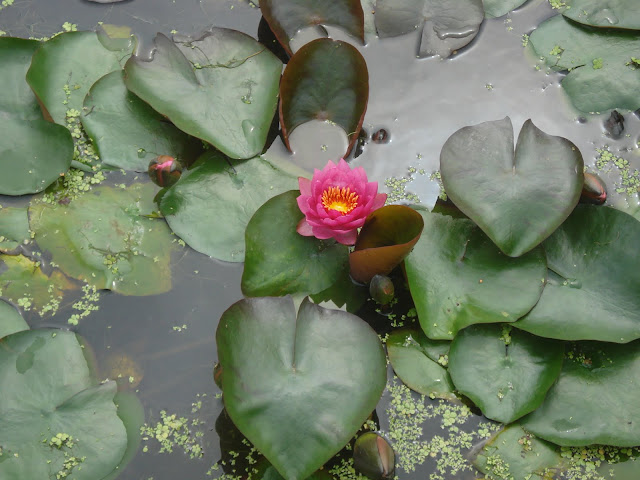 |
| This is the Gyeongju Cheomseongdae, which is (Korea claims) the oldest astronomical observatory in East Asia. You can read more about it below. |
 |
| This thing is all over the advertisements in Gyeongju. It looks a lot bigger when you are far away, but when you get up close it looks pretty squat. Those big heavy bricks are pretty amazing though. |
 |
| Some big tombs that I thought I would take a picture of, but didn't care enough to go and find out who was buried there. |
 |
| The park had some beautiful lotus ponds, and the lotus were in full bloom. |
 |
| They were fun to take pictures of! |
 |
 |
| Me at the Gyeongju National Museum. |
 |
| This is a Stone Age fishing net. |
 |
| I really liked these little clay figures. They are called Tou Figurines and they are representations of daily life during the Shilla Period. They date back to the Shilla Period (5th-6th cent.) |
 |
| This is a pitcher shaped as a "sacred beast" I guess. It is like a dragon turtle. It was found in a 6th cent Royal tomb. |
 |
| Here are some more Tou figures. These animals are stuck around the neck of this vase, and are symbolic of abundance, longevity, and rebirth. |
 |
| A golden Shilla crown. The little jade pendants would be attached to the crown by golden chains. |
 |
| Some Koreans looking at a display. |
 |
| Lots of earthenware. |
 |
| This house shaped urn is is similar to the style and appearance of a tiled rood during the Shilla Period. Perhaps it was created with the idea of giving the soul a place to lived in the afterlife. |
 |
| Her is Erik's zodiac symbol, the pig, No dragon though =( |
 |
| Outside there are replicas of the famous stone pagodas around Korea. Here is a replica of a pagoda at Bulguksa. I saw the real one though! |
 |
| I just had to take a picture of this dad yelling at his daughter. She just looks so sorry for whatever it was that she did wrong. |
 |
| This is the bell of King Seongdeok. |
 |
| The bell is famous for the images of the flying deities holding an intense burner. |














No comments:
Post a Comment